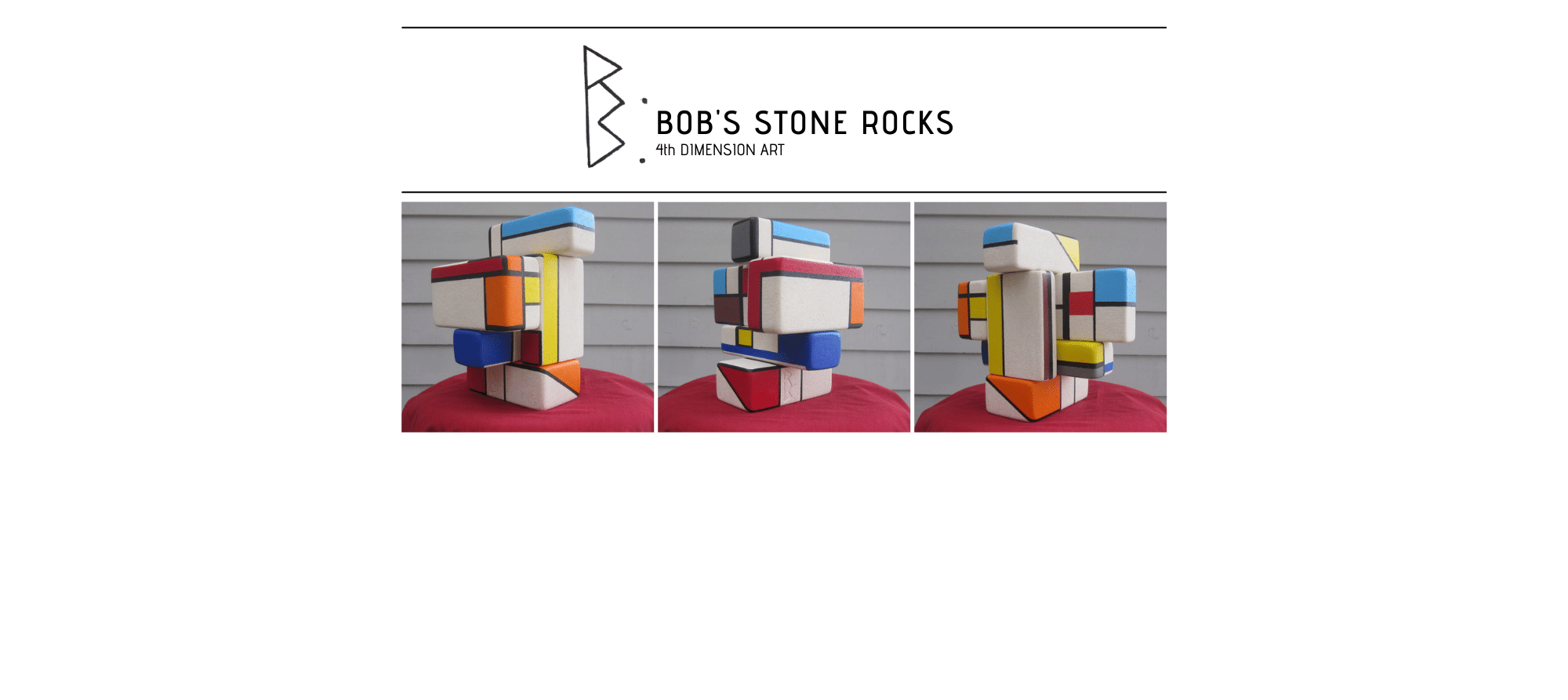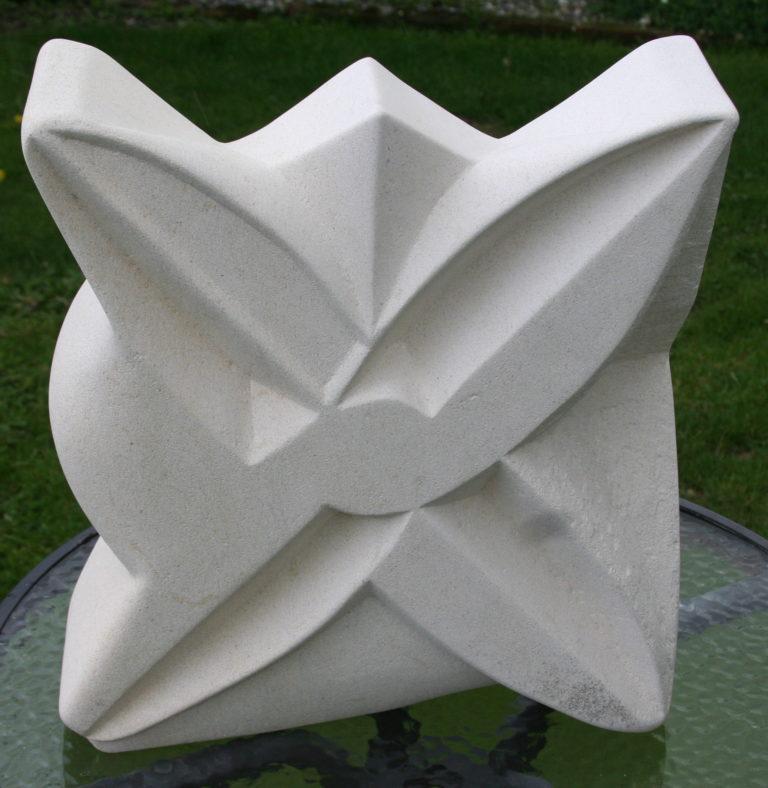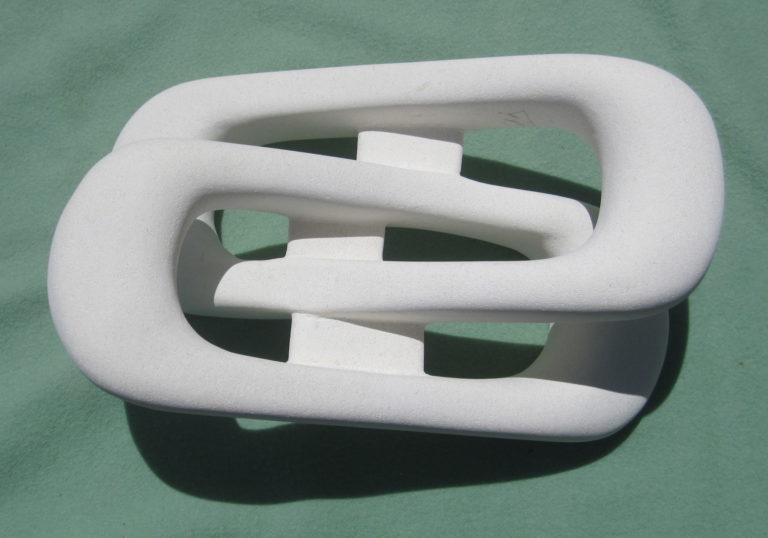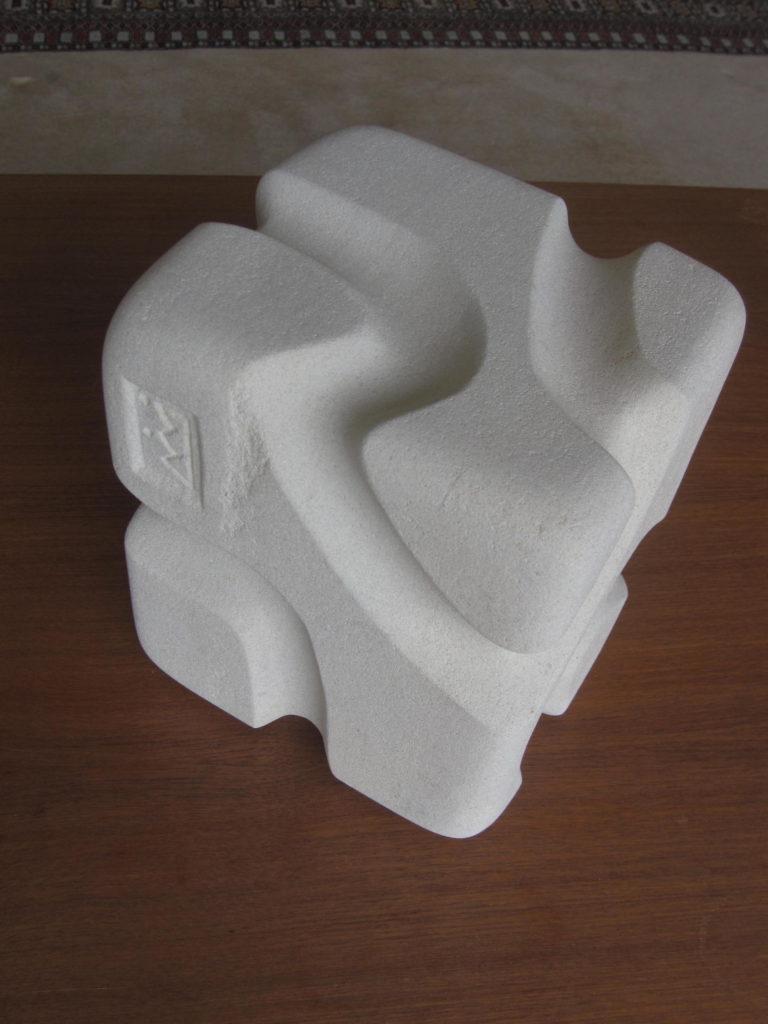My sculptures of Oamaru stone (New Zealand limestone) evolved into a “4th dimension” style as a challenge to myself. This initial challenge resulted in a rectangular cube (could have easily been a square) with a line running through some part of each edge (12 edges) without intersecting itself (Sculpture #11).
What I mean when I say “4th dimension”; this style can be viewed from all sides, and certainly from more than one position.
Because of the white or near white color, the light falling across the sculpture changes the appearance on the surface. There are six possible viewing surfaces of a cube. There is not a preference by the artist as to a preferred position for display purposes. It is rather the preference of the owner, exhibitor, or curator.
How it is displayed will enhance the viewing, ie: sun moving across a window developing different shadows changing the surface. Changing the position of the piece allows for the sun to show “alternatives” of the surfaces. Also, newer pieces do not have a cube or square shape but are more varied in structure but still are able to be displayed in multiple positions.
There is a signature mark, but that is only to identify the “maker” but not a preference of position for display. Also, these pieces of art are typically non-functional. The limitation of this art is size. A one-ton block, carved on all sides, can theoretically be moved and all surfaces can be a part of the “art”. But it is not practical to do so without mechanical equipment. So, I feel “4th dimension” pieces have to be “easily” changed in position by “human power”, but not necessarily limited to that to be called “4th dimension art”. The position of the pieces should be changed to enjoy the creator’s attempts to provide a “different view” of the same piece of art.
Different media can be used such as glass, stone, wood, metal, etc., but the “4th dimension” aspect should be maintained under my definition.



